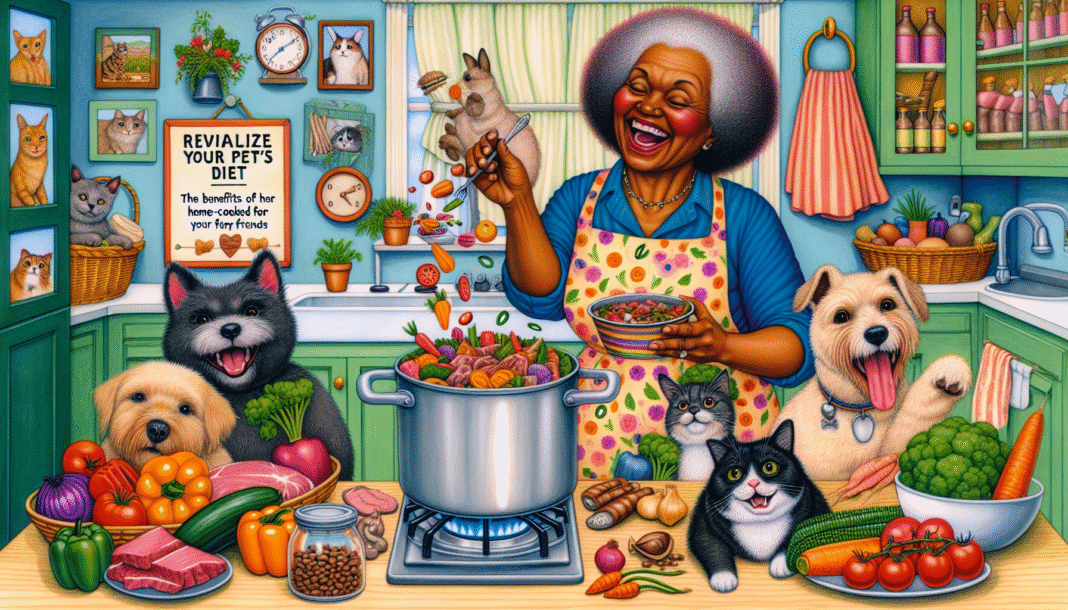As pet owners, we often strive to provide the very best for our furry companions. One of the most impactful ways to enhance their well-being is by focusing on their diet. With an increasing awareness of pet health, more owners are considering home-cooked meals for their pets. Let’s delve into the multitude of benefits, various approaches, nutritional considerations, and practical tips for preparing wholesome meals for your beloved animals.
Understanding the Importance of Diet in Pet Health
The Foundation of Pet Well-Being
A well-balanced diet is crucial for maintaining your pet’s overall health. Just like us, pets require a variety of nutrients to thrive, including proteins, fats, vitamins, and minerals. Commercial pet foods can sometimes contain fillers and preservatives that may not be beneficial for your pet. Home-cooked meals allow for greater customization and control over what your furry friend consumes.
Common Issues with Commercial Pet Foods
Many commercial pet foods are laden with artificial additives, allergens, and low-quality ingredients. These can contribute to health issues such as allergies, obesity, and digestive problems. By preparing meals at home, you can avoid these unwanted ingredients and tailor the diet to suit your pet’s specific needs and preferences.
Benefits of Home-Cooked Meals
Enhanced Nutritional Value
Home-cooked meals can be significantly more nutritious than many commercially available options. You have the freedom to select high-quality ingredients such as lean meats, fresh vegetables, and wholesome grains. These provide essential vitamins and minerals, enhancing your pet’s energy levels and immune function.
Weight Management
Obesity is a growing concern among pets, leading to various health complications, including heart disease and joint problems. When you cook at home, you can better monitor portion sizes and caloric intake, making it easier to maintain a healthy weight for your furry friend.
Improved Digestion
Pets often suffer from digestive issues due to low-quality ingredients in commercial pet food. Home-cooked meals enable you to incorporate easily digestible ingredients and avoid common allergens, thus promoting better gut health and overall well-being.
Increased Bonding Time
Cooking for your pet can also deepen your bond. Spending time in the kitchen together can become a fun and rewarding experience, allowing you to observe their preferences and dietary needs more closely.
Practical Tips for Preparing Home-Cooked Meals
Consult Your Veterinarian
Before altering your pet’s diet, consult your veterinarian. They can provide personalized guidance based on your pet’s breed, age, and health status. This ensures you’re meeting all nutritional needs and avoids any potential health risks.
Balanced Recipes
When cooking at home, aim for balanced recipes. A typical pet meal should consist of:
- Proteins: Lean meats like chicken, turkey, beef, or fish.
- Carbohydrates: Whole grains such as brown rice or quinoa.
- Vegetables: Safe veggies like carrots, peas, and sweet potatoes.
- Fats: Healthy fats such as fish oil or flaxseed oil.
Ensure your pet’s diet is well-rounded by including a mix of these components.
Easy-to-Make Recipes
-
Chicken and Rice Delight
- Ingredients: 1 cup of cooked chicken, 1 cup of brown rice, 1/2 cup of peas, 1/2 cup of carrots.
- Instructions: Combine all ingredients in a bowl and serve after cooling.
- Beef and Sweet Potato Stew
- Ingredients: 1 cup of ground beef, 1 cup of diced sweet potatoes, 1/2 cup of green beans, water.
- Instructions: Cook beef in a pan, add sweet potatoes and green beans, and simmer with water until cooked thoroughly.
Safe and Unsafe Foods
Know which foods are safe and harmful for pets. Common safe options include:
- Cooked chicken, turkey, and fish.
- Carrots, green beans, broccoli.
- Certain fruits like blueberries and bananas.
Avoid toxic foods such as chocolate, grapes, onions, and garlic that can pose serious health risks to your pet.
Making the Transition to Home-Cooked Meals
Gradual Introduction
Introduce home-cooked meals gradually to prevent digestive upset. Start by mixing small portions of home-cooked food with their regular diet, slowly increasing the amount over time. Monitor your pet for any signs of discomfort or allergies during this transition.
Keeping It Exciting
Variety is key to keeping your pet engaged with their meals. Rotate proteins and vegetables regularly to prevent monotony and ensure they receive a wide range of nutrients.
Storage and Preparation Tips
Prepare larger batches of food and store them in airtight containers in the refrigerator or freezer. This not only saves time but also ensures you always have nutritious meals ready to go.
Monitoring Your Pet’s Health
Regular Veterinary Check-Ups
Once you switch to home-cooked meals, keep up with regular vet appointments to monitor your pet’s health, weight, and nutritional balance. This ensures that your cooking aligns with their health needs and adjustments can be made if necessary.
Listening to Your Pet
Pay attention to your pet’s reactions to their new diet. Look for signs like energy levels, coat condition, and behavioral changes. If they seem less energetic or have digestive issues, consult your vet to reassess their diet.
Adjusting Meal Plans
As your pet ages or their health evolves, you may need to adjust their meal plans. Senior pets often have different nutritional requirements, such as reduced calories and specific joint-supporting ingredients.
By taking the initiative to craft nutritious home-cooked meals for your pet, you’re not just feeding them; you’re investing in their health and happiness. Enjoy the journey of discovering new recipes and bonding with your furry companion through nutritious and delicious meals!





